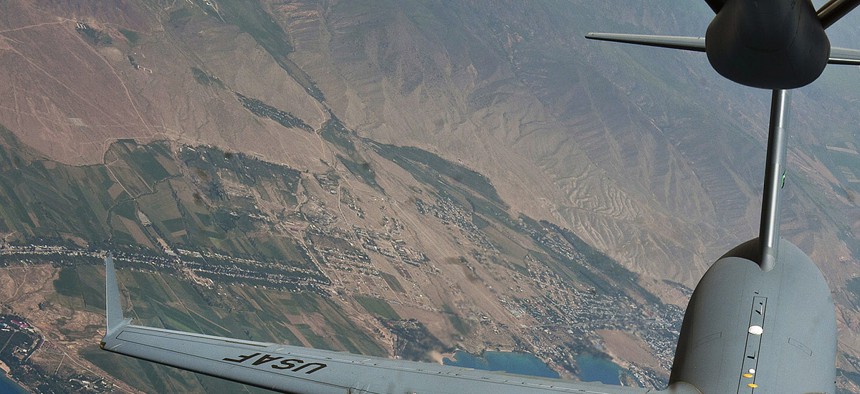
A U.S. Air Force C-17 prepares to refuel during a demonstration over Kyrgyzstan. U.S. Air Force photo by Senior Airman Brett Clashman
This is NATO's Version of 'Netjets'
The little-known Strategic Airlift Capability Program provides high-end air assets to alliance partners on the cheap. It's a template that should be expanded. By Janine Davidson
Terms like “military partnership” and “multilateral engagement” are used quite often in modern defense planning, but beyond periodic joint exercises it’s not always clear what sustained cooperation looks like. One promising, little-known example is the Strategic Airlift Capability program. This program, founded in 2008 between twelve NATO and NATO “Partnership for Peace” nations, allows countries without the individual means to purchase their own expensive jets, the ability to share the logistical and financial burden of rapid-response airlift – kind of like a multinational military version of “Netjets.”
Here is how it works:
Twelve SAC partners—Bulgaria, Estonia, Finland, Hungary, Lithuania, the Netherlands, Norway, Poland, Romania, Slovenia, Sweden and the United States—share three C-17 Globemaster III jets, whose primary mission is rapid, long-distance transport of military and humanitarian support. The aircrews are also multinational with each SAC nation providing personnel in numbers proportional to its ownership “share” of the total available flight hours. Thus SAC allows smaller nations to acquire a high-end military capability that was formerly beyond their reach, enhancing their ability to provide humanitarian aid, operate in a coalition, and defend their national interest.

SAC has flown roughly 940 missions since its founding, with some of the most noteworthy being support to International Security Assistance Force (ISAF) in Afghanistan, aid to Haiti after its devastating 2010 earthquake, and ongoing UN peacekeeping operations in Mali.
In an era of fiscal austerity and declining defense budgets, this program seems like a good model for NATO to follow for other expensive capabilities. Not only would it save money and reduce redundancies in the alliance, adopting such programs would encourage allies and partner forces to train and operate together, improving overall competence and interoperability.
NATO could apply this same cost and personnel sharing technique for expensive naval assets, air refueling, and other military technology, some more complex than others. In fact, they could get started asap by collectively buying and operating the mistral class amphibious assault ships France is poised to sell to Russia. This would have the added bonus of keeping these out of the Russian military inventory.
This post appears courtesy of CFR.org.




